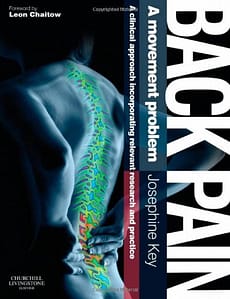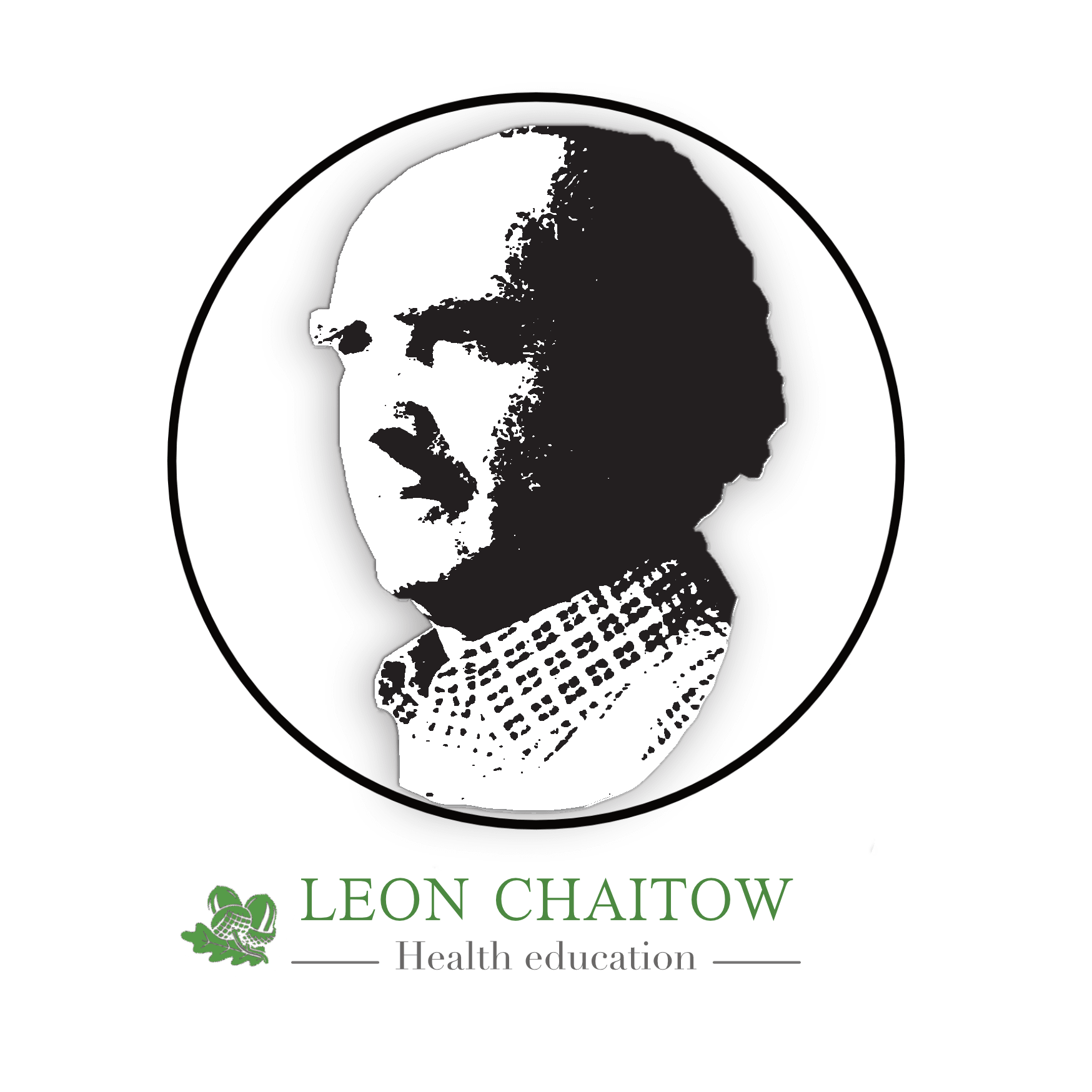 Back Pain – A Movement Problem: A clinical approach incorporating relevant research and practice, 1st edition, by Josephine Key
Back Pain – A Movement Problem: A clinical approach incorporating relevant research and practice, 1st edition, by Josephine Key
Book Details (UK)
Foreword by Leon Chaitow
An outside observer might consider – what with the plethora of professions focusing on the topic, and the ceaseless flow of research reports about it, – that back pain might now be pretty well understood. However, those of us who labour at the coal-face, confronted daily by myriad versions of ‘back pain’, realise that the truth is somewhat different, with aetiologies almost as varied as the individuals with the symptoms.
Congresses and conferences devoted to different aspects of back pain, come and go, almost always generating contrasting viewpoints, sometimes diplomatically managed, and sometimes not. However – by small incremental degrees – we appear to be inching forward towards a realisation that it is actually possible, in many instances, to identify coherent patterns of dysfunction that relate to the reported pain, and that a degree of categorisation is often possible. As a result therapeutic choices can frequently be based on what the author of this fascinating book has described as, ‘a balance between practice-based evidence and evidence-based practice’. This book encourages that process by offering a deeper understanding of some of the processes of compensatory change that may at times be neglected when confronted by a pain-afflicted patient.
It was in the early 1980s that I first became aware of the work of the great Czech physician, Vladimir Janda. Along with many thousands of others, his landmark work has continued to inform my understanding of the human body. Of particular value were his explanations of patterns of dysfunction – for example – Upper and Lower Crossed Patterns (‘syndromes’). These describe the veritable chain reactions that emerge when overused, hypertonic, muscle groups, alternate with inhibited antagonists, to form sequences of dysfunction, that commonly translate into pain and other symptoms. (See Chapter 9)
The classical example Crossed Syndrome Pattern is exemplified by the individual whose head and neck are forward of their normal centre of gravity, chin poked anteriorly, with a combination of hypertonic shortened neck extensors/ inhibited – possibly lengthened deep neck flexors; short-tight upper fixators of the shoulder (upper trapezius, levator scapula) as well as shortened shoulder protractors/ alternating with weak inhibited lower shoulder fixators – including middle and lower trapezius ….. and so on, down the body; with shortened lumbar erector spinae – inhibited core abdominal muscles – shortened hip flexors – inhibited gluteal muscles, and so on, involving a complex and compound series of adaptations and compensations, extending the full length of the body. What emerges are not just biomechanical stresses and strains and, inevitably, pain and dysfunction of affected muscles and joints. Additional pathophysiological changes impact on breathing function, and internal pelvic function – with major implications for the individual’s health and wellbeing.
Janda not only described and codified such patterns, but via many years of research was able to offer cogent clinical guidelines as to how to begin the process of understanding and ‘reading’ them – using functional assessments such as the scapulohumeral rhythm test, and hip abduction test – as examples.
Keen observation and analysis, over a long period, has allowed Josephine Key to accurately describe further elaborations on the theme of Crossed Syndromes, that have immense clinical value. Important insights emerge from Key’s expansion of – for example – Janda’s original Lower Crossed Syndrome – (where the pelvis translates posteriorly in relation to the trunk – see p. 219). Importantly she also recognised the obverse pattern – one in which the pelvis virtually translates anteriorly (see p.224). My own first reaction to seeing and reading about these expanded descriptions of Janda’s work was to say – ‘Of course, that’s obvious!’. But what was not immediately obvious was that the physiological adaptations that flowed from one such Crossed Pattern would be so different from those flowing from another – with clear implications for subsequent clinical choices. Details of these changes are a small part of what remains for the reader to explore during the reading of this book.
Once the global scale of postural imbalances, and the habitual patterns of use with which these are associated, can be more effectively understood, rehabilitation and normalisation are more readily achievable. What has become clear in this greater understanding is the relative pointlessness – apart from offering symptomatic relief – of excessive therapeutic attention being paid to where pain is being experienced. Low back pain , for example, can well be the end-result of adaptive changes resulting from a primary lower limb imbalance, or a head/neck imbalance – and treating the area of pain without attention to the origin is – to paraphrase an old osteopathic term – no more than ‘engine wiping’.
What Josephine Key and her collaborators have achieved in this book is to build on Janda’s foundational body of work. If Janda was able to demonstrate ‘what’ happens when posture goes wrong, Key has taken the focus further towards the ‘why?’ adaptation failure culminates in pain, dysfunction and other symptoms.
Key, with ample reference to the research of others, has mined and collated the evidence of her many years of clinical practice, to effectively demonstrate the need for us to understand the ways in which overuse, misuse, abuse and disuse lead inevitably to altered posturo–movement control, and commonly to pain. How to read such changes more effectively, and how to integrate appropriate treatment and rehabilitation strategies, are the tools that are on offer from this excellent work.
All those working in manual/physical medicine – practitioners and therapists of all schools – can benefit from its’ practical insights.
Leon Chaitow ND DO
University of Westminster, London
